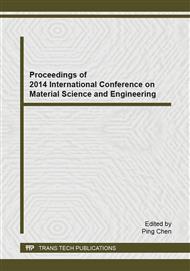p.53
p.58
p.62
p.67
p.77
p.83
p.89
p.96
p.101
Lime Plasters Containing Waste Ceramic Powder as Partial Replacement of Siliceous Aggregates
Abstract:
Waste materials are utilized with an increasing frequency in the building industry, during the last decades. The motivation is both environmental and economical. In this paper, waste ceramic powder produced at the grinding of hollow brick blocks used in precise-walling technologies, is applied as a partial replacement of siliceous aggregates of lime plasters. The designed plaster mixes are analyzed from the point of view of their basic physical, mechanical, hygric and thermal properties. The bulk density, matrix density, open porosity, compressive strength, bending strength, water vapor diffusion permeability, water vapor diffusion coefficient, water vapor diffusion resistance factor, thermal conductivity and specific heat capacity are the investigated parameters. A reference lime plaster is analyzed as well, for the sake of comparison. Experimental results show a remarkable enhancement of mechanical properties of the plasters with the increasing dosage of ceramic powder. Moreover, the thermal insulation properties are improved and the water vapor diffusion capability of the plasters with ceramic powder increases.
Info:
Periodical:
Pages:
77-82
Citation:
Online since:
October 2014
Authors:
Price:
Сopyright:
© 2014 Trans Tech Publications Ltd. All Rights Reserved
Share:
Citation:


